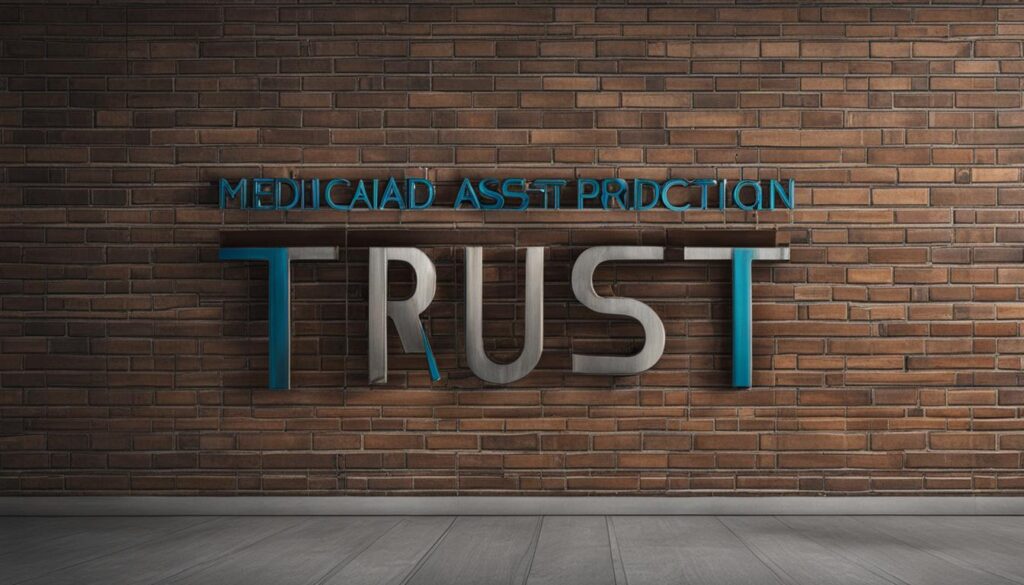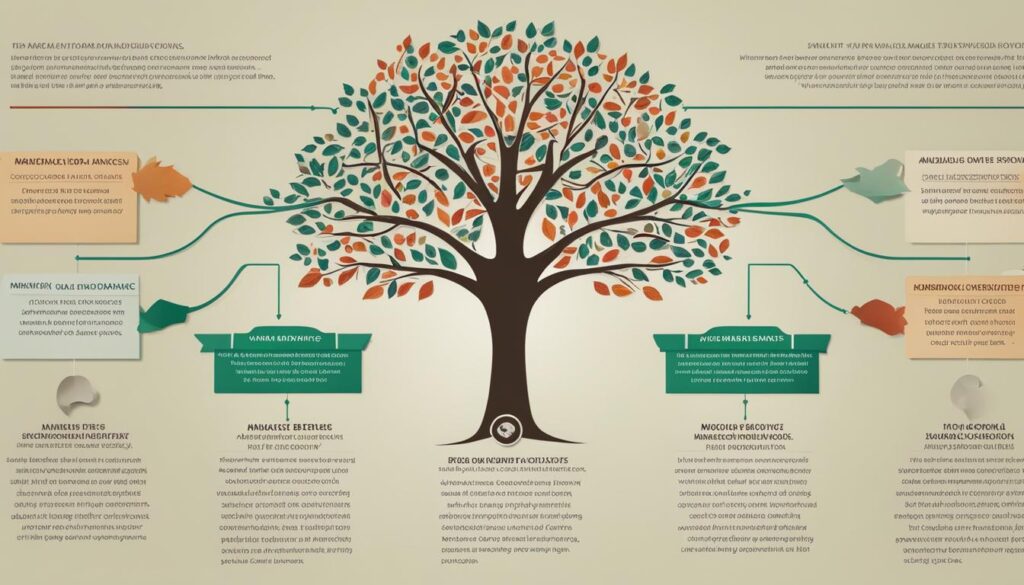When it comes to securing financial stability for oneself and one’s family, a Medicaid Asset Protection Trust (MAPT) can be an invaluable tool. By establishing a Medicaid trust for assets, individuals can maintain eligibility for vital healthcare services while protecting their hard-earned wealth from being depleted by long-term care costs. In this article, we will discuss the various aspects of MAPTs, including their benefits, limitations, and steps required to create an effective health asset trust that preserves both health and wealth.
With the rising cost of healthcare and uncertainty surrounding future medical expenses, many Americans face the daunting challenge of navigating long-term care planning. Medicaid wealth protection strategies, such as an MAPT, are designed to help individuals safeguard their assets from being counted towards Medicaid’s strict financial thresholds, thus ensuring continued benefits coverage. By understanding the intricacies of a Medicaid trust for assets and how it relates to state-specific requirements, you’ll be better prepared to make informed decisions for your financial well-being and long-term care planning.
Understanding Medicaid Asset Protection Trusts
Medicaid Asset Protection Trusts (MAPTs) are specialized legal tools designed to secure an individual’s assets while ensuring eligibility for Medicaid long-term care services. These trusts function as a proactive approach to preserving wealth for beneficiaries, as they offer protection against Medicaid’s stringent asset limits.
Unlike revocable living trusts, which do not effectively protect assets from Medicaid’s financial thresholds, irrevocable MAPTs prevent assets from being accessible to the trustmaker. As a result, the assets are not considered countable for determining Medicaid eligibility. This distinction separates MAPTs from revocable trusts, making them a more strategic choice for those seeking to protect their assets while retaining eligibility for Medicaid-provided long-term care services.
Determining the right plan for asset protection is crucial for individuals with significant wealth or investments, as Medicaid’s financial limits can significantly impact long-term care options. By establishing a Medicaid trust for assets, you can maintain access to essential health services while securing the financial future of your loved ones.
In addition to establishing eligibility for Medicaid, a well-structured Medicaid financial trust can help protect your assets from any attempts by the state to recover long-term care expenses after your passing. This ensures that not only will your estate remain intact for your beneficiaries, but you will also retain access to vital healthcare services without depleting your hard-earned wealth.
It is essential to seek professional assistance when setting up a Medicaid Asset Protection Trust, as navigating the intricate regulations and requirements surrounding these trusts can be challenging. By working with an experienced attorney, you can ensure that your trust is appropriately structured, assets are adequately protected, and your eligibility for Medicaid remains intact.
Eligibility for Medicaid: The Financial Thresholds

Meeting Medicaid’s financial thresholds is a crucial aspect of obtaining eligibility for government-funded health care services. In terms of qualifying asset levels for Medicaid, the criteria can vary, but one common requirement is having $2,000 or less in countable assets. Each state may have different guidelines, and it is vital to understand the specific rules and exemptions that apply to your situation.
Qualifying Asset Levels for Medicaid
When determining an applicant’s Medicaid eligibility, certain assets are considered exempt, meaning they do not count toward the strict financial threshold. Examples of exempt assets include a primary residence, personal belongings, and specific types of life insurance. By excluding these assets, individuals have a better chance of meeting Medicaid’s strict financial requirements.
The Importance of Planning Ahead for Long-Term Care
One significant factor in Medicaid eligibility planning is understanding the five-year look-back period implemented by the Medicaid program. This period serves as a safeguard against individuals who attempt to transfer assets improperly to secure eligibility for Medicaid’s long-term care benefits. To position oneself for eligibility, it is essential to plan ahead for long-term care and transfer assets to a Medicaid Asset Protection Trust well before the five-year mark. This proactive planning approach also requires recognizing the irrevocable nature of such trusts and the loss of control that occurs once assets are transferred.
The Risks of Informal Asset Transfers to Family Members

While transferring assets to family members might seem like a simple way to ensure they don’t fall within the purview of Medicaid, doing so carries significant risks. Notably, informal asset transfers can jeopardize Medicaid coverage during the five-year look-back period, which can result in severe consequences for both the applicant and their beneficiaries.
One of the primary risks of transferring assets without the use of a Medicaid Asset Protection Trust is that the assets in question may potentially be lost due to various external factors. For example, a family home that has been transferred to a child could be subject to loss because of the child’s divorce or financial troubles. By relying on a formal approach, such as a Medicaid Asset Protection Trust, individuals seeking aid can ensure that their assets are adequately safeguarded against these risks.
Moreover, when assets are transferred within the look-back period, Medicaid may impose a penalty period. During this time, the individual could be deemed ineligible for Medicaid benefits, which might create a significant financial burden for the applicant who now requires long-term care.
In essence, attempting to protect assets through informal means can inadvertently lead to complications and even loss of assets. In contrast, using legal tools like Medicaid Asset Protection Trusts can help preserve wealth and ensure eligibility for long-term care benefits. The significance of these risks underpins the necessity of professional guidance and a well-thought-out Medicaid planning strategy.
Asset Protection: The Legal Shield of MAPTs

A Medicaid Asset Protection Trust (MAPT) acts as a legal shield for individuals seeking to protect their hard-earned assets while ensuring eligibility for Medicaid benefits. By transferring the ownership of one’s assets into the protective structure of the trust, the assets are effectively preserved from depletion by long-term care costs and removed from Medicaid’s eligibility equation.
One of the critical aspects of a successful MAPT is proper timing. It is essential that the trust is created and funded at least five years prior to applying for Medicaid benefits in order to avoid penalties. This five-year window allows individuals to take advantage of the legal shield of the Medicaid Asset Protection Trust and secure their assets without triggering any negative consequences during the Medicaid application process.
By safeguarding assets within the trust, individuals can not only protect their estate from long-term care expenses, but also shield their family inheritance and provide security for future generations. The ability to protect assets using a Medicaid trust plays a pivotal role in preserving the financial future and ensuring that one’s hard-earned wealth is not depleted merely due to the need for long-term care.
Ultimately, utilizing a Medicaid Asset Protection Trust as a protective legal shield is a strategic and intelligent approach to help individuals maintain their eligibility for vital Medicaid benefits while preserving their valuable assets. However, it is essential to work with an experienced professional who is well-versed in trust planning and Medicaid regulations to ensure the proper establishment and management of the trust for optimal asset protection.
Misconceptions Around Protecting the Family Home

One common misconception about protecting the family home is that simply transferring it to a family member will safeguard it from Medicaid estate recovery. However, this assumption can lead to unfavorable outcomes as it may inadvertently expose the home to external risks such as the family member’s divorce or financial issues.
Furthermore, improperly structured transfers may still be subject to estate recovery. To effectively protect the family home, individuals should consider establishing a Medicaid Asset Protection Trust (MAPT) or other legal means that can adequately safeguard the property.
Another misconception is that the family home is always exempted from Medicaid estate recovery, regardless of the estate’s overall value. While a primary residence is typically considered an exempt asset for Medicaid eligibility purposes, it could still be subject to estate recovery if a Medicaid-covered individual passes away, and the state seeks reimbursement for benefits provided. In this situation, the benefits of a properly structured MAPT or other forms of asset protection become even more evident as they can shield the family home from such recovery efforts.
Ultimately, it is essential for individuals and families to explore all legal avenues for protecting the family home when planning for Medicaid eligibility and long-term care needs. By identifying and dispelling misconceptions, individuals can make informed decisions that best suit their unique circumstances and ensure the successful protection of their family home from undue risks and potential Medicaid estate recovery.

The Medicaid five-year look-back period is a crucial aspect of any Medicaid planning strategy, as it directly impacts an individual’s eligibility for long-term care benefits. During this five-year window, Medicaid officials review and scrutinize all financial transactions, including asset transfers, to ensure that applicants have not strategically impoverished themselves to qualify for Medicaid benefits. Understanding the implications of the look-back period is essential for successful Medicaid planning and long-term care coverage.
One of the primary reasons for establishing a Medicaid Asset Protection Trust (MAPT) is to protect assets from being considered countable during the look-back period. To comply with Medicaid’s regulations, it is vital to transfer assets to the MAPT well in advance of applying for benefits. Failing to do so may result in a penalty period, during which the individual will be ineligible for Medicaid benefits, thus causing unnecessary financial strain and possible complications in accessing long-term care services.
To navigate the look-back period, careful planning and organization are of utmost importance. The goal is to avoid financial transactions within the five-year period that could trigger eligibility penalties or delays in accessing Medicaid benefits. This means timing the transfer of real estate, investment accounts, and other countable assets to the MAPT appropriately. Once the assets are successfully transferred and the five-year look-back period has elapsed without issue, the individual may proceed with their Medicaid application, confident that their assets are protected and their eligibility is secure.
Remember, each person’s circumstances are unique, and Medicaid rules and regulations may vary by state. Seeking the advice of a knowledgeable professional is essential to navigate the complexities of the Medicaid five-year look-back period and develop a customized plan to suit your individual needs and goals.
The Irrevocable Nature of Medicaid Asset Protection Trusts

By design, Medicaid Asset Protection Trusts (MAPTs) are irrevocable legal instruments created to ensure that an individual’s assets remain protected while also maintaining eligibility for Medicaid long-term care benefits. This irrevocable nature means that once assets are placed within the trust, the grantor relinquishes control over those assets, and ownership cannot be regained. Though this aspect of an irrevocable Medicaid trust may be seen as a drawback, it is an essential characteristic that enables the exclusion of assets from consideration by Medicaid for eligibility assessment.
Losing Control Over Assets: A Necessary Sacrifice?
The inherent trade-off of establishing an irrevocable MAPT is the relinquishing of control over assets placed within the trust. For some individuals, losing control over assets may be perceived as a significant concern. However, it is important to recognize that this is a necessary sacrifice to achieve the desired protection and benefits that the trust provides.
Once assets are placed within an irrevocable trust, they are no longer considered “available” to the grantor. This means they are unlikely to be factored into Medicaid’s financial eligibility assessment, effectively preserving eligibility for long-term care benefits. Additionally, this arrangement prevents the assets from being accessed by creditors and other parties, which could be advantageous in safeguarding the family’s wealth and estate value.
In conclusion, while the irrevocable nature of a MAPT may initially seem daunting due to the loss of control over assets, it is an essential characteristic in ensuring asset protection and continued eligibility for Medicaid long-term care benefits. As each individual’s situation is unique, consultation with an experienced elder law attorney or financial professional is highly recommended to determine the best course of action to safeguard assets while still adhering to Medicaid’s eligibility requirements.
Transferring Your Home: A Detailed Look at Child Caregiver Exceptions

When planning for long-term care, it is essential to be aware of specific rules and exceptions, such as the Child Caregiver Exception. This exception allows an individual to transfer their home to their adult child without incurring a Medicaid penalty, provided certain conditions are met.
Under the Child Caregiver Exception, the adult child must have lived with and provided care to their parent, thereby delaying institutionalization. Some of the strict guidelines surrounding this exception include:
- The adult child must have resided with their parent in the home for at least two years before the parent moves into a nursing home or receives Medicaid assistance.
- The adult child must have provided care that delayed the parent’s need for a nursing home or Medicaid assistance for at least two years.
- The care provided by the adult child must be documented and verified by a healthcare professional as necessary for the parent’s well-being and safety.
If these conditions are met, an individual may use the Child Caregiver Exception to safely transfer home Medicaid to their adult child, protecting the family home from potential Medicaid estate recovery efforts.
It is crucial to seek professional advice when considering the Child Caregiver Exception as a long-term care planning strategy. An experienced elder law attorney can help navigate the complexities of Medicaid rules and maximize the opportunities for asset protection while ensuring compliance with all necessary guidelines.
Other Exempt Transfers: Protecting Vulnerable Beneficiaries

The Medicaid program recognizes the importance of safeguarding the interests of vulnerable beneficiaries and thus allows for certain exempt transfers that do not incur penalties. These exemptions facilitate asset protection for beneficiary families that include a child under 21, a blind or disabled child, or a “caretaker child” who satisfies specific caregiving criteria. Additionally, exempt transfers may involve establishing a trust for a disabled person under the age of 65 or transferring a home to a sibling with an equity interest in the property.
Exempt transfers help preserve the financial stability of vulnerable beneficiaries who might otherwise face significant economic challenges without this protection. These provisions demonstrate Medicaid’s commitment to providing a safety net for individuals in need while preventing the depletion of assets meant for the care and support of disabled or dependent family members.
Understanding the eligibility requirements and restrictions for exempt transfers is crucial in optimizing vulnerability beneficiary protection. A thorough analysis of each family’s unique circumstances is necessary to determine the most appropriate strategies for maximizing the benefits of exempt transfers.
Overall, knowledge of the exempt transfers Medicaid provisions is vital to ensure the protection of vulnerable beneficiaries and the assets intended for their welfare. Collaborating with skilled professionals who specialize in Medicaid planning can facilitate the best possible long-term care and financial planning solutions to protect the assets and well-being of those most vulnerable.
Protecting Investment Assets with Medicaid Financial Trusts

While Medicaid Asset Protection Trusts often focus on safeguarding real estate and family heirlooms, they can also play a critical role in preserving more liquid assets, such as stocks and bonds. These types of investment assets can be protected from both Medicaid eligibility assessments and potential depletion using properly structured trusts.
Instead of giving up full access to these investment assets, a Trustmaker can opt for an income-only trust structure. Below, we take a deeper look at this strategy and how it can protect your investments while still retaining access to crucial income streams.
The Income-Only Trust Structure
An income-only trust is a type of Medicaid financial trust designed for individuals who wish to retain some benefits from their investment assets while still preserving Medicaid eligibility. As the name suggests, the income-only trust structure allows the original owner of the investments to receive income generated by the assets, while the principal remains securely within the trust.
This approach ensures that individuals can continue to enjoy their investments’ revenue streams without losing their Medicaid eligibility. Moreover, the principal amount remains safe from potential expenses like the costs associated with long-term care or Medicaid Estate Recovery actions.
As with other types of Medicaid Asset Protection Trusts, it is crucial to plan and establish the income-only trust well in advance of applying for Medicaid benefits. With the correct preparation, this irrevocable trust structure serves dual purposes – continuously providing income to the Trustmaker and preserving the investment assets for their beneficiaries.
In conclusion, protecting investment assets can be achieved using an income-only trust structure within a broader Medicaid financial trust plan. By retaining a source of income from the assets and simultaneously satisfying Medicaid eligibility requirements, trustmakers can maintain their financial well-being while ensuring their investments remain secure for future generations.
The Impact of Asset Protection Trusts on Eligibility and Estate Recovery

Medicaid Asset Protection Trusts (MAPTs) play a crucial role in safeguarding assets from both Medicaid eligibility evaluations and estate recovery efforts by the state. This dual advantage provided by MAPTs ensures that individuals can maintain their eligibility for Medicaid while simultaneously preserving their estate for their loved ones.
When assets are placed within a MAPT, they are considered legally separate from the individual’s countable assets. Consequently, these assets do not factor into the assessment of their Medicaid eligibility. Thus, MAPTs provide an effective way for individuals to comply with Medicaid’s stringent impact on Medicaid eligibility by protecting their assets from being counted.
Additionally, MAPTs serve as a protective measure against Medicaid estate recovery attempts by the state. Estate recovery laws allow states to recoup the costs associated with Medicaid-funded long-term care from the beneficiary’s estate after their passing. By transferring assets to an MAPT, individuals preserve their estate’s value for future generations while avoiding potential Medicaid estate recovery efforts.
It is essential to remember that proper structuring and timely transfer of assets to a MAPT are critical for maximizing its efficiency. Consequently, individuals seeking to utilize a MAPT should seek professional guidance to ensure compliance with all necessary rules and regulations. In conclusion, the use of an adequately structured Medicaid Asset Protection Trust offers significant benefits in terms of accessing crucial long-term care while preserving an individual’s hard-earned assets for their heirs.
Why You Need a Long-Term Strategy for Your MAPT Assets

Establishing a long-term strategy for assets within a Medicaid Asset Protection Trust (MAPT) is essential to ensure that these assets are managed according to the grantor’s wishes and eventually transferred to beneficiaries without unintended consequences or penalties. Effective estate planning with a Medicaid trust approach provides a solid foundation for preserving wealth and ensuring a seamless asset distribution process.
Implementing a long-term strategy MAPT involves a thorough understanding of the grantor’s financial goals and the unique requirements of beneficiaries. The strategic planning process may encompass asset allocation, tax minimization, and management of the investments held within the trust. This ensures that the assets are structured optimally to maximize the benefits for the beneficiaries, maintain Medicaid eligibility, and simplify estate administration.
Another crucial aspect of a long-term strategy for MAPT assets is the appointment of skilled and knowledgeable trustees. Trustees play a vital role in administering the trust, and their responsibilities may include investment management, tax reporting, legal compliance, and eventual distribution of assets to beneficiaries. Choosing a trustee with experience navigating the complex world of Medicaid and estate planning provides peace of mind for both grantors and beneficiaries.
Investing time and effort in the creation of a well thought-out, long-term strategy is a hallmark of effective estate planning for a Medicaid trust. Such a strategy ensures that the assets within the trust continue to grow and benefit future generations. Furthermore, this reduces the risk of legal disputes, tax issues, or financial complications that may arise in the absence of a well-crafted plan.
In conclusion, adopting a long-term strategy MAPT approach is vital to preserving and managing assets within a Medicaid Asset Protection Trust. This proactive financial planning helps maintain eligibility for Medicaid long-term care, safeguard wealth from potential liabilities, and secure the financial future of beneficiaries. To navigate the complexities of Medicaid and estate planning, it is advisable to seek professional guidance to ensure a comprehensive, robust, and legally sound strategy.
The Crucial Role of Trust Planning in Medicaid Wealth Protection

Trust planning plays a vital role in Medicaid wealth protection by providing a structured and legal approach to safeguarding assets against long-term care costs and potential Medicaid recovery efforts. This strategic planning must be thoughtful and carefully designed to meet specific objectives and compliance with state-specific rules.
Implementing a wealth protection strategy is essential for individuals seeking to maintain their Medicaid eligibility for long-term care while preserving their assets for the future. Trust planning encompasses both the establishment of trusts and the ongoing management of trust assets. A well-structured trust ensures that the assets are protected with minimal impact on Medicaid eligibility.
Trust planning Medicaid involves thorough research and understanding of the complexities and nuances involved in long-term care planning. A knowledgeable and experienced professional is pivotal to assist with the decision-making process, ensuring the trust provides the desired level of protection and takes into account the individual’s unique financial situation and goals.
Each state has specific regulations and requirements governing trust planning Medicaid, and staying in compliance with these rules is critical for asset protection strategies to be effective. It is crucial to create and fund the trust well in advance, typically at least five years before applying for Medicaid benefits. This action minimizes the risk of penalties and gives the trust ample time to provide the required level of asset protection.
Proactive trust planning for Medicaid wealth protection enables individuals and families to navigate through the complexities of Medicaid rules and maximize their asset protection. By establishing a well-structured and well-funded trust, individuals can ensure eligibility for Medicaid benefits, maintain control of the trust’s terms, and provide a secure financial legacy for their family’s future.
Alternatives to Medicaid Asset Protection Trusts

While Medicaid Asset Protection Trusts (MAPTs) are a common strategy for preserving eligibility, there exist other Medicaid planning options to safeguard assets and ensure access to long-term care benefits. These alternatives to Medicaid Asset Protection Trusts require careful consideration to make sure they align with each individual’s unique financial situation and long-term care goals.
Spend-Down Strategies
Spend-down strategies involve utilizing excess assets to pay for services or items that can improve an individual’s quality of life, such as home modifications, medical equipment, or prepaid long-term care services. By spending assets on exempt items and services, the individual can reduce their countable assets and potentially qualify for Medicaid benefits.
Medicaid Compliant Annuities
Medicaid compliant annuities are specialized financial products that convert excess assets into a regular income stream, thereby enhancing a person’s eligibility for Medicaid. To be compliant, these annuities must meet specific requirements, such as being irrevocable, non-transferable, and actuarially sound. Additionally, the state must be named the primary or secondary beneficiary of the annuity up to the amount paid out by Medicaid for the individual’s care.
Irrevocable Funeral Trusts
Irrevocable Funeral Trusts can be an effective option for asset protection and Medicaid planning. These trusts are specifically designed to pre-fund funeral expenses, exempting the funds from being considered countable assets. By placing excess assets into an irrevocable funeral trust, a person can lower their countable resources while ensuring their final expenses are covered.
Alternatives to Medicaid Asset Protection Trusts such as spend-down strategies, Medicaid compliant annuities, and Irrevocable Funeral Trusts can help individuals structure their finances to qualify for Medicaid benefits while preserving their assets. It’s essential to thoroughly evaluate these options in light of personal financial circumstances and long-term care goals. Professional guidance from a knowledgeable attorney or financial planner is highly recommended to navigate the complexities of Medicaid planning and explore the most suitable options.
FAQ
What is a Medicaid Asset Protection Trust (MAPT)?
A Medicaid Asset Protection Trust is a legal tool designed to secure an individual’s assets while maintaining eligibility for Medicaid long-term care benefits. It helps individuals comply with Medicaid’s strict financial thresholds by shielding certain assets from being considered countable for eligibility purposes.
How does an MAPT differ from a revocable living trust?
Unlike revocable living trusts, which do not offer protection against Medicaid’s asset limits, irrevocable MAPTs ensure assets are not accessible to the trustmaker, making them exempt from counting towards Medicaid’s financial thresholds.
What are the risks associated with informal asset transfers to family members?
Informal asset transfers to family members carry significant risks, such as jeopardizing Medicaid coverage during the five-year look-back period or subjecting the asset, like a family home, to potential loss through a child’s divorce or financial issues.
How can a Medicaid Asset Protection Trust protect assets from estate recovery?
Assets placed within a Medicaid Asset Protection Trust are exempt from being counted toward Medicaid eligibility and are also protected from estate recovery efforts by the state. This ensures that Medicaid applicants can access needed care while preserving their estate for future generations.
What is the five-year look-back period, and how does it affect Medicaid eligibility?
The five-year look-back period is a timeframe during which Medicaid reviews an applicant’s financial history to identify any asset transfers or gifts that may disqualify them from receiving benefits. Transferring assets to a Medicaid Asset Protection Trust well in advance ensures that the assets will not trigger eligibility penalties for Medicaid long-term care benefits.
Yes, there are exceptions, such as the Child Caregiver Exception and other exempt transfers aimed at protecting vulnerable beneficiaries. These include transfers to a child under 21 or who is blind or disabled, a trust for a disabled individual under age 65, a sibling with an equity interest in the home, and a “caretaker child” who meets specific caregiving criteria.
Can an MAPT generate income for the trustmaker?
Yes, a Medicaid Asset Protection Trust can be structured as an income-only trust, allowing the original owner of investment assets to receive the generated income while the principal remains safeguarded within the trust.
What are the alternatives to Medicaid Asset Protection Trusts?
Alternatives to Medicaid Asset Protection Trusts include spend-down strategies, Medicaid compliant annuities, and Irrevocable Funeral Trusts. These solutions require careful planning and consideration to ensure they align with an individual’s unique financial situation and long-term care goals.
The Bottom Line
Medicaid Asset Protection Trusts offer a viable option for individuals seeking to preserve assets while ensuring Medicaid eligibility for long-term care. These specialized trusts serve as a strategic legal tool to help individuals comply with Medicaid’s strict financial thresholds while protecting their wealth for beneficiaries. It is essential to establish and fund a Medicaid Asset Protection Trust at least five years prior to applying for Medicaid long-term care benefits to avoid penalties and maintain eligibility.
Each person’s financial circumstances and long-term care goals are unique, making proactive planning for Medicaid essential. The use of alternative strategies, such as spend-down approaches, Medicaid compliant annuities, and Irrevocable Funeral Trusts, can also help individuals maintain eligibility and protect their assets. To navigate the complexities of Medicaid planning, asset protection, and long-term care strategies, it is crucial to seek professional guidance and map out a personalized, comprehensive plan.
A well-structured and carefully designed Medicaid plan, incorporating asset protection strategies like the Medicaid Asset Protection Trust, can help individuals and families preserve their wealth and prepare for the future with peace of mind. By safeguarding assets, maintaining benefits eligibility, and minimizing potential penalties, individuals are positioned to secure both their health and wealth for years to come.






